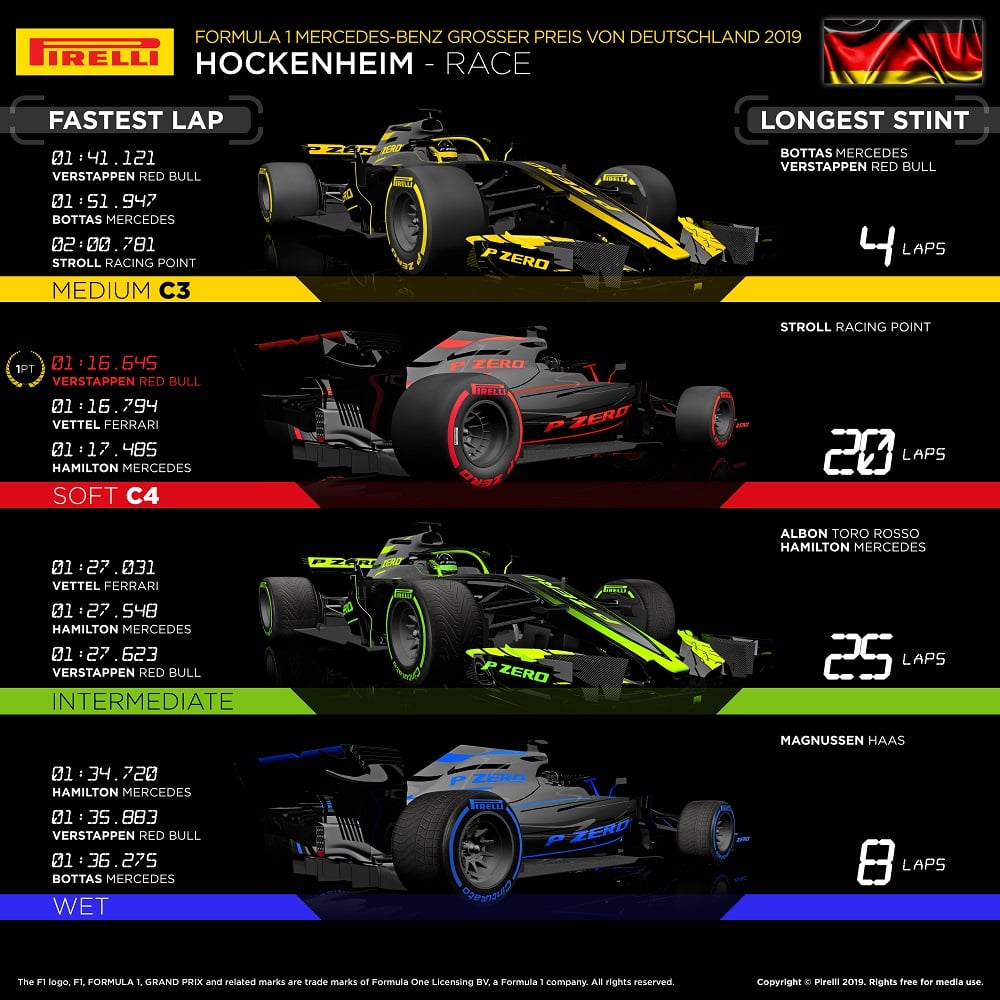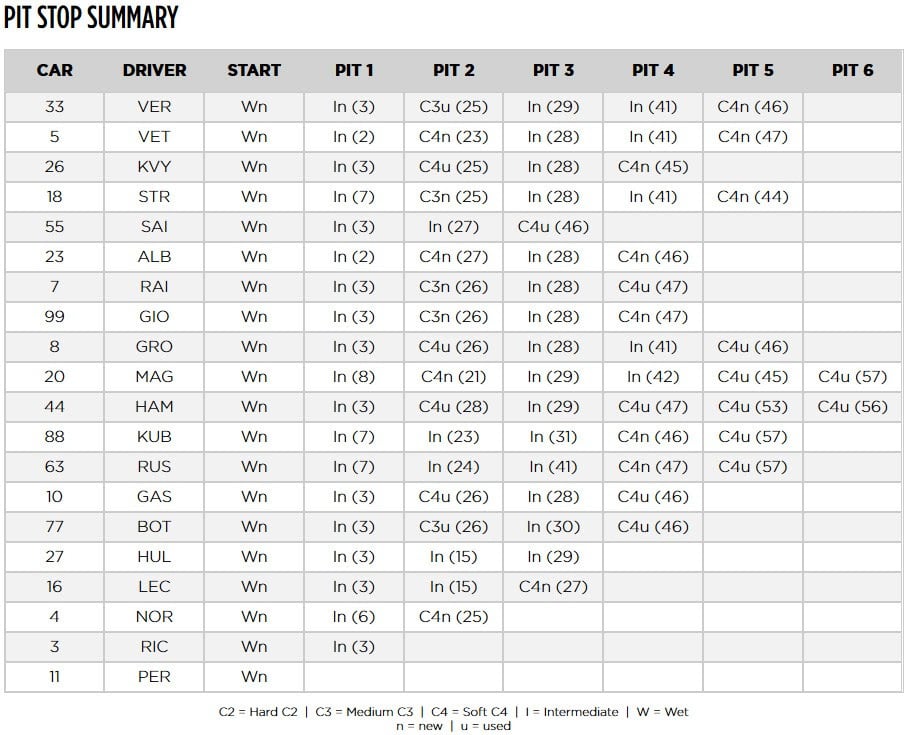July 29, 2019 |
2019 German Grand Prix
Hockenheim, July 28, 2019
After two days of very hot weather, the German Grand Prix was held in wet conditions nearly all the way to the finish, leading to a chaotic race with multiple pit stops and four safety cars. Red Bull's Max Verstappen eventually won the race, having stopped five times, ahead of Ferrari's Sebastian Vettel and Toro Rosso's Daniil Kvyat.

KEY MOMENTS
- A wide mixture of strategies (from 3 to 6 stops) were used throughout the 64-lap race due to changeable weather conditions. All the tyres in the range were used at various points, with the exception of the hard.
- A total of 78 pit stops were made, with the drivers using 97 sets of tyres throughout the race
- All the drivers started on full wet tyres, after three formation laps behind the safety car. The teams then reacted to changing grip and circumstances, with the timing of the final stop onto slick tyres proving to be crucial to the race outcome.
- Ferrari driver Sebastian Vettel started from the back of the grid following a technical problem in qualifying. He used a five-stop strategy to finish second on a near-identical strategy to Verstappen.
- Mercedes driver Lewis Hamilton went off twice and stopped six times (like Haas's Kevin Magnussen) en route to 11th.
- Drivers had to take care not to overheat the intermediates on a drying track, which nonetheless coped very well with the conditions.
- Ambient temperatures at the start of the race were 22 degrees centigrade, while track temperatures were 28 degrees. By the end of the grand prix, the surface was mainly dry.

HOW EACH TYRE PERFORMED
- HARD C2: This was the only tyre of the range not to be used at all during the race.
- MEDIUM C3: Just five drivers (including Verstappen) used this compound for a limited number of laps, as the soft was performing better in the damp and cool conditions.
- SOFT C4: Used by all the drivers at the end of the race and claimed fastest lap with Verstappen, who earned the extra point.
- INTERMEDIATE: The tyre used most extensively during the race, with a number of stints in excess of 20 laps.
- WET: All the drivers started on this tyre but most changed them early in the race during the first safety car..
MARIO ISOLA - HEAD OF F1 AND CAR RACING
"For the strategists this was one of the hardest races of the year to call, as they had to constantly anticipate and react to rapidly changing circumstances, both when it came to judging the grip and maximising the opportunities presented by all the safety cars. On top of that, the conditions changed a lot from sector to sector. As a result though, strategy made a real difference this weekend, especially when it came to working out when to make the final move to slick tyres for the last stint. The three drivers on the podium in particular took full advantage of the capabilities of the soft tyre on a drying track at the end of a thrilling and unpredictable race. When it was wet, the intermediate tyres proved their versatility in a wide range of conditions, which was crucial as none of the drivers had experienced any proper running on the wet-weather tyres, so there was no real basis on which to judge the crossover points. Now we have collected a lot of data on the intermediate. Congratulations to all the podium finishers, and also to Racing Point and Lance Stroll who led the race close to the end thanks to their strategy call."




